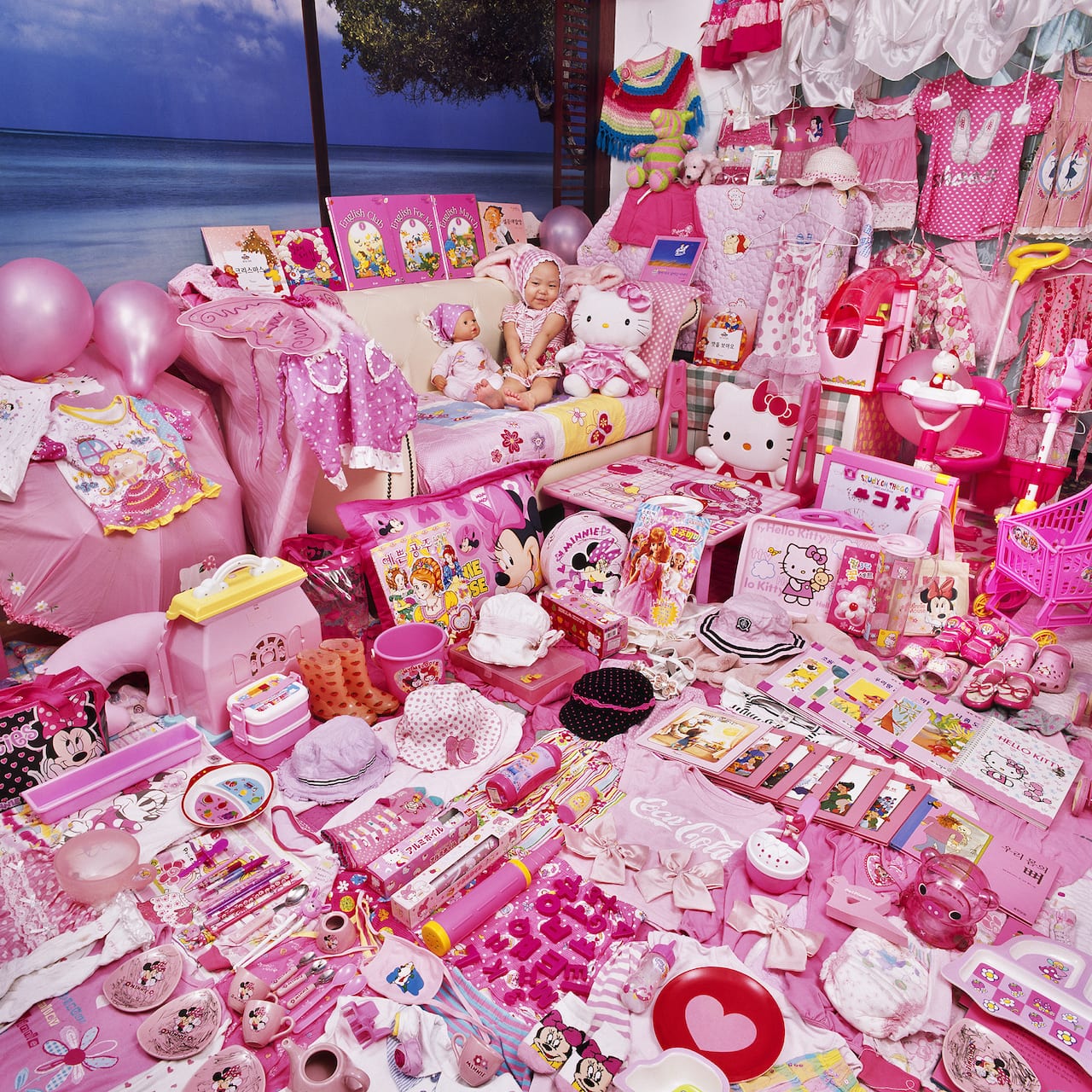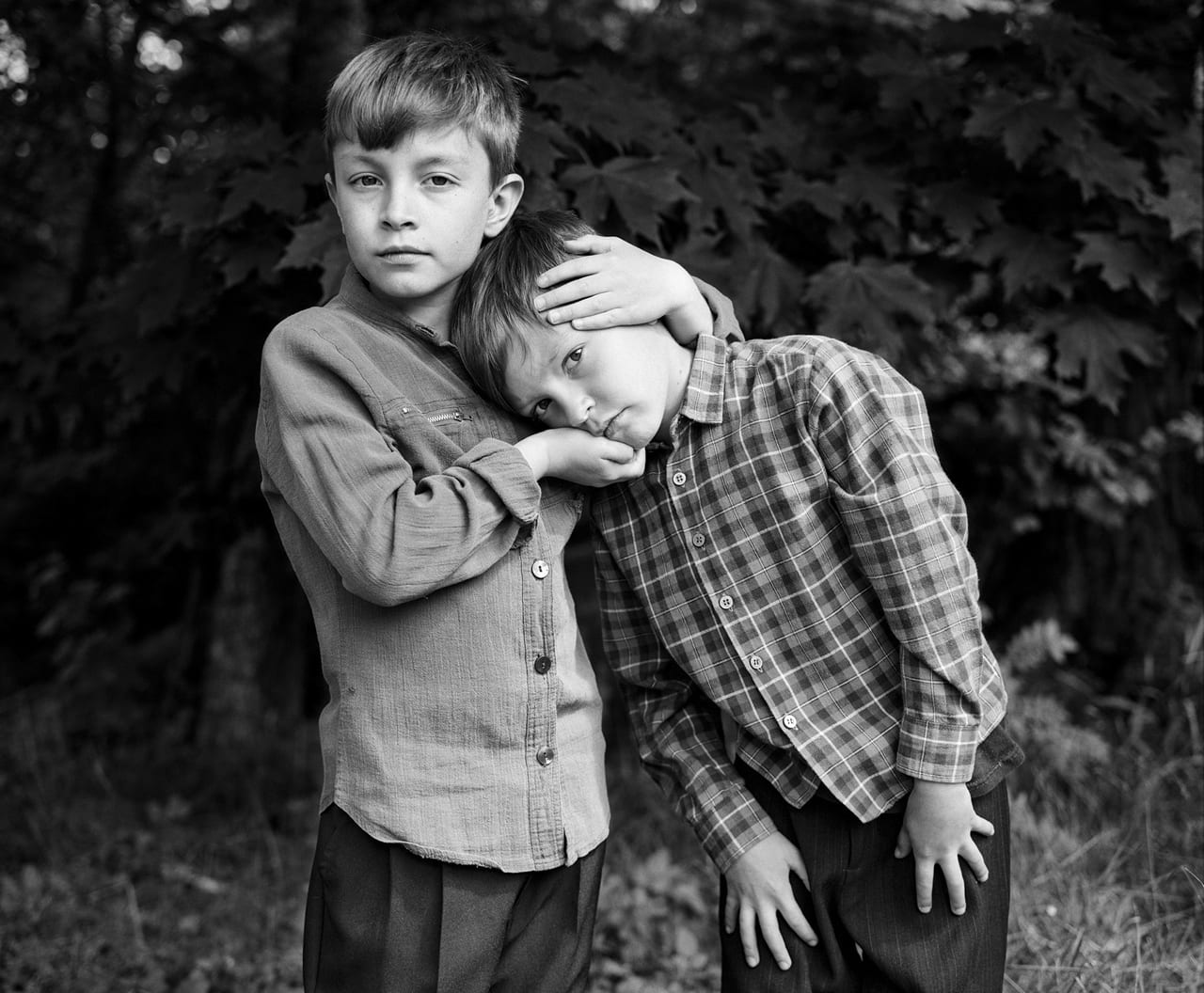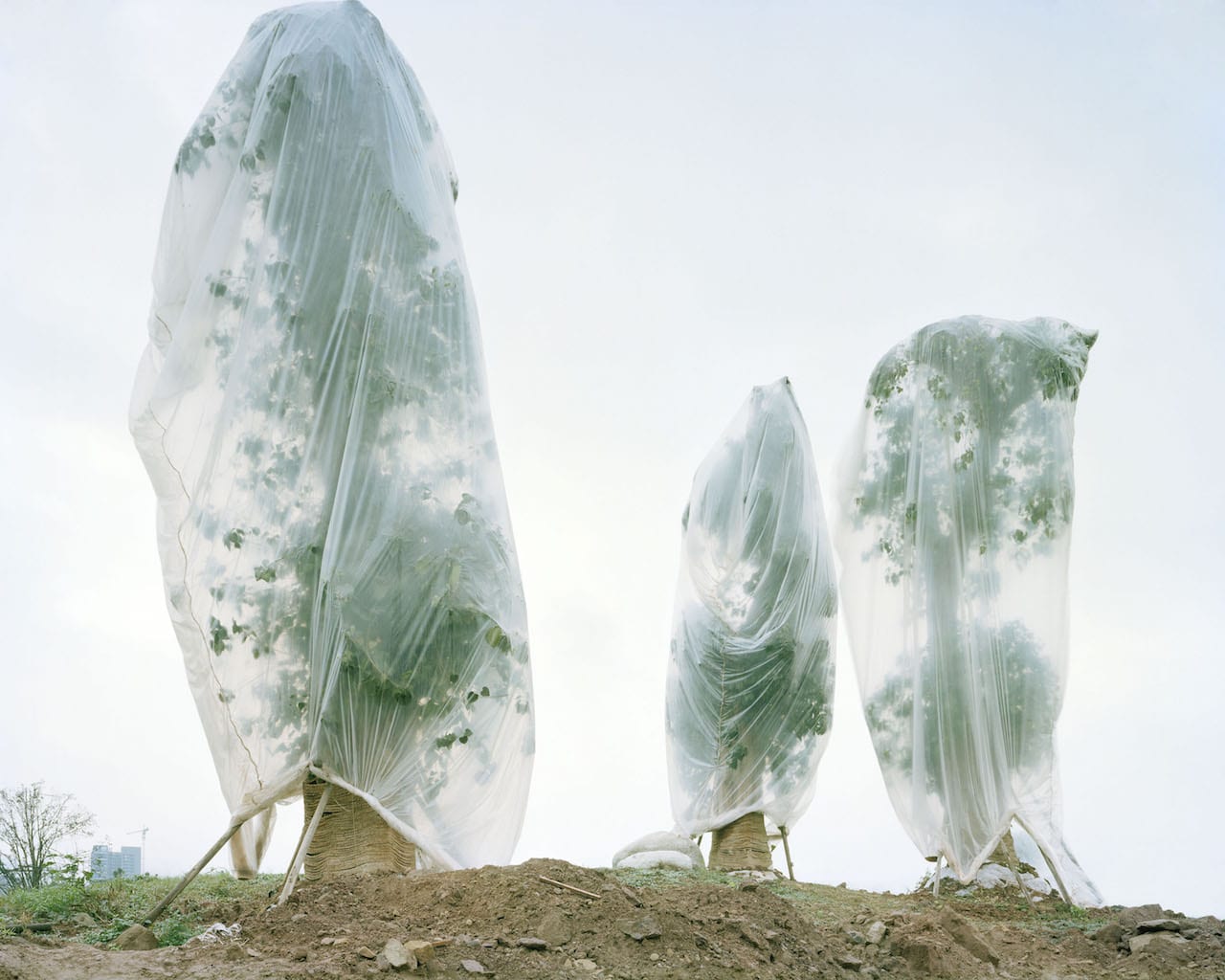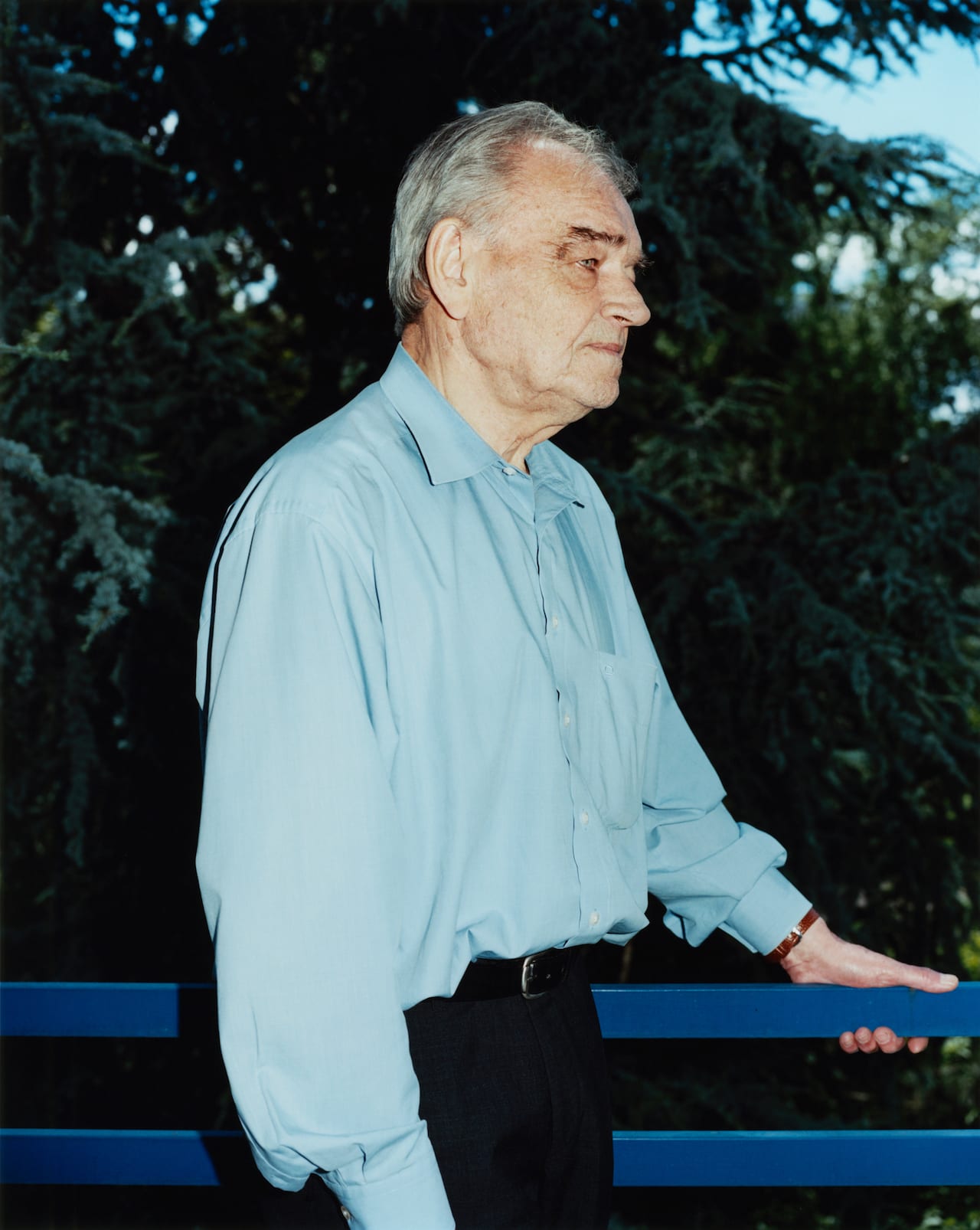“The Pink and Blue Projects were initiated by my five-year-old daughter, who loved the colour pink so much that she wanted to wear only pink clothes and play with only pink toys and objects,” writes JeongMee Yoon. “I discovered that my daughter’s case was not unusual.
“In the United States, South Korea and elsewhere, most young girls love pink clothing, accessories and toys. This phenomenon is widespread among children of various ethnic groups regardless of their cultural backgrounds. Perhaps it is the influence of pervasive commercial advertisements aimed at little girls and their parents, such as the universally popular Barbie and Hello Kitty merchandise that has developed into a modern trend. Girls train subconsciously and unconsciously to wear the colour pink in order to look feminine.”






